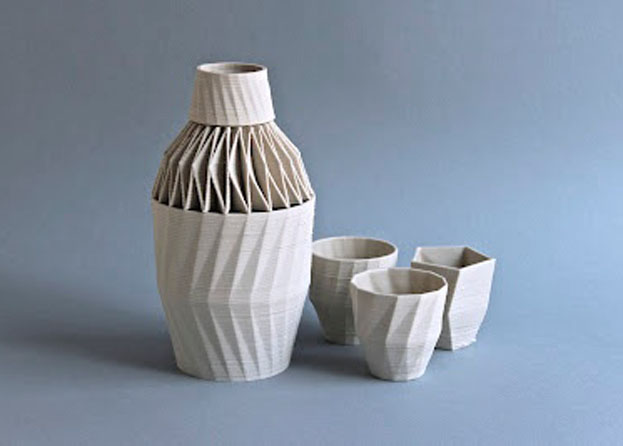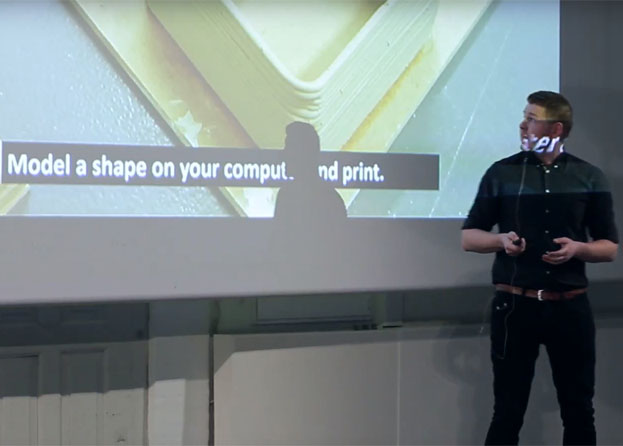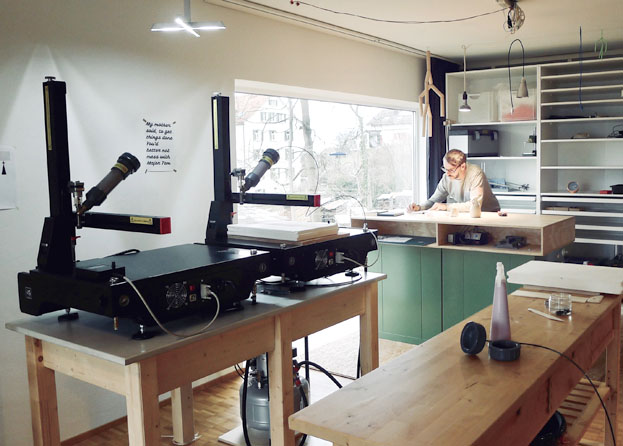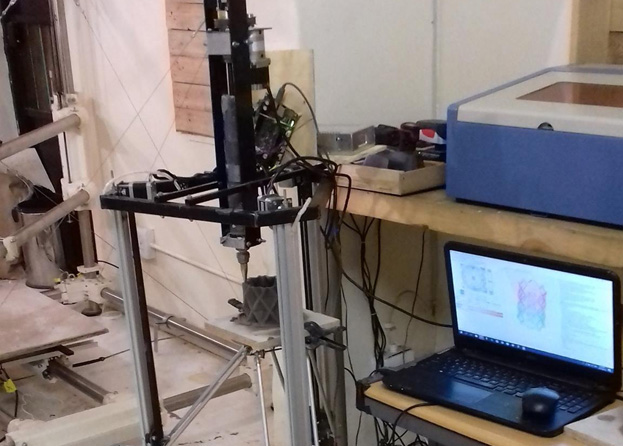Belgian Design Studio Unfold started extruding ceramic materials with a RepRap one year ago. In their recent post they gave an overview of some of the stuff they have been printing in porcelain.

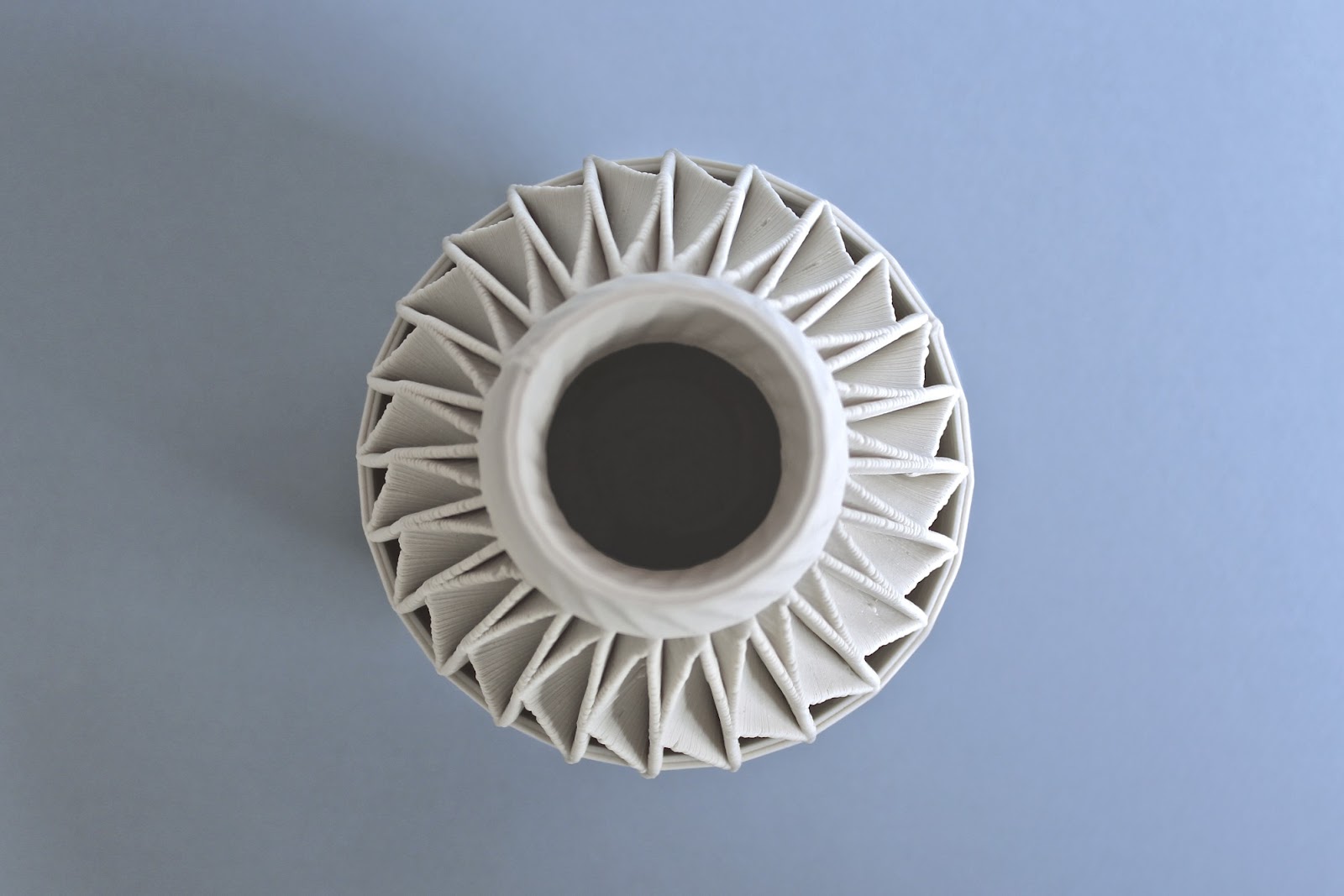
If you look at the carafe & cups pictured above it is difficult to believe all these were printed on an open source RepRap, Rapman 3D printer from Bits From Bytes.
Based on Makerbot’s Frostruder MK2, Unfold built Claystruder 1.0 for RapMan, a printhead used for printing earthenware and porcelain ceramic objects.

“Instead of a mechanical plunger, you use timed pulses of air pressure to drive the material out of the syringe hence in the industry this is called a Time-Pressure Valve. The only difference with the frostruder apart from the physical design is that we use one double action 3/2 solenoid valve instead of two 2/2 single action ones. The 3/2 valve will pressurize when powered and automatically depressurize when power is removed. Its cheaper and requires only one controller output to operate. The double 2/2 gives possibly a greater flexibility in pressure timing. ”
Unfold has also been working on developing custom software to convert the design file, in their case the Gcode Stacker. “It takes SVG vector files as input and spits out Gcode. Every SVG layer is a Gcode layer. This gives finer control over machine paths and enables you to do stuff impossible in 3d>Gcode toolchains like for example intersecting lines.”
The ceramics 3D printer offers possibilities to produce fine layers and new forms that traditional pottery techniques hardly can make.
These general principles of designing a ceramics 3D printer should be easily adaptable to Mendel or other machines. If you want to test on your own RepRap and build such a printhead for 3D ceramic printing follow the instructions here. But before you start your exploration you might like to read a post about all sorts of clay for 3D printing, written by ceramic artist Jonathan Keep for Unfold blog.
In the video below, Unfold created a virtual pottery wheel which gives visitors a chance to ‘turn’ their own forms. The virtual pottery wheel was realized by means of a 3D-scanner and digital design software. And then the design is printed by the RepRap 3D printer.

